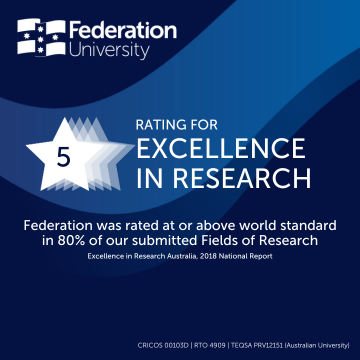As farmers look to be more economically and environmentally sustainable, researchers are working to help them evolve their operations as demand for produce and livestock soars from domestic and international markets.
Australia's pork industry has seen a substantial increase in demand over the last five decades, with higher-density operations and increased farm waste, including effluent.
Researchers from the Centre for eResearch and Digital Innovation (CeRDI) and the Future Regions Research Centre (FRRC) are working with producer-owned Research and Development Corporation, Marketing and Industry body Australian Pork Limited (APL) and collaborating with researchers from the University of Melbourne to promote climate-friendly farming practices in the industry.
The Australian pork industry says its sustainability framework aims to achieve a range of sustainability goals by 2025 including carbon cycling and nutrient accounting, to reduce waste through soil research, natural resource management, and effective management of pig effluent.
Global research suggests that pig effluent can be a viable alternative or add-on to existing fertilisers, but APL wanted research to demonstrate whether this holds true for Australian conditions.
"APL is aware that pork effluent, which is produced in great amounts, has the potential to be a useful resource. It was our task to explore its use as a resource for soil fertilisation in Australia and what are the benefits and problems," CeRDI Research Associate Dr Carolyn Staines said.
"APL asked us to talk to Australian pork producers and see what they're doing with their effluent, are they spraying it on crops, for example? They also wanted us to test the soil on farms to see what impact it's having on the soil in our climate."
The effluent is typically stored on the farm, and the research is focusing on distributing it as a wet slurry by spraying.
Dr Staines says producers appreciated the waste's great potential as an alternative fertiliser but have noted that it's more challenging to store and distribute than other products, and there are limitations on when it can be used. Farmers can't easily transport it on boggy ground in winter and other times of significant rain.
One farm reported that the manure appeared to eliminate slugs from a test site – an unexpected but welcome development.
Professor Singarayer Florentine, who is a co-director of the FRRC, says the review showed that pig effluent that is used as a spray-on fertiliser has benefits for soil by increasing organic carbon and improving pH, aeration, bulk density and porosity of the soil. It also increases microbiological communities and the availability of nutrients in the soil while boosting its water-holding capacity.
"On the other hand, the accumulation of pig effluent in farm soils can be of environmental concern if not managed appropriately." Professor Florentine said. "The effluent significantly elevates soil nutrient levels, so if the surrounding plant biomass does not absorb it, it can infiltrate surrounding waterways.
"Such effluent can contain various diseases, microorganisms, pathogens, protozoa and viruses, which also may pose a risk to animal, human or plant health. But these risks can be mitigated, and the pre-treatment of pig effluent is important for the safe and confident use of these fertilisers. In some cases, it may not completely eliminate all possible risks."
For a local perspective on using and managing piggery effluent, the researchers consulted with six producers in Victoria and New South Wales who identified several benefits of using pig effluent as a fertiliser.
"While their primary motivation appeared to be the need to manage the substantial amount of effluent being produced, other reasons included the need to improve crops and pastures, soil health and becoming more economically sustainable," Professor Florentine said.
"While there were apparent challenges in using pig effluent as a fertiliser, this consultation found that several producers were interested in making more use of the effluent on their farms. Producers suggested there was a need for improvements in application technology and better advice for management of this resource, with many of the land managers expressing interest in the practice of carbon neutral farming."
Professor Florentine says changes in carbon content between effluent-treated and non-treated paddocks were generally small, but the soil pH did generally decrease in effluent-treated sites. Test sites treated with effluent had greater nutrient concentrations, including nitrogen, phosphorus, sulphur and potassium.
"The findings suggest that if pig effluent fertiliser practices follow all state and territory regulations and are regularly monitored and appropriately applied to the soil, piggery effluent can become a valuable resource for agricultural soils within Australia."




















